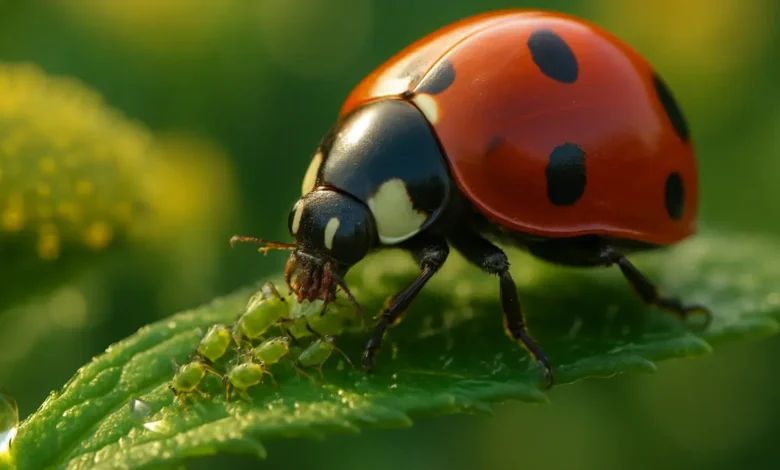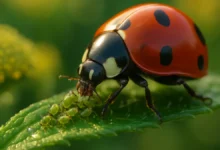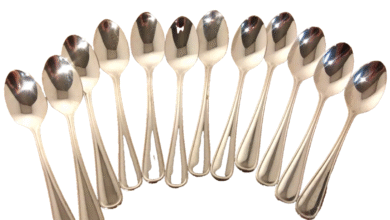What Do Ladybugs Eat: A Complete Expert Guide

Discover what do ladybugs eat, from aphids to pollen. Learn how their diet supports gardens, controls pests naturally, and helps ecosystems thrive in this expert guide.
Ladybugs, often admired for their colorful spots and delicate wings, are not just a symbol of good luck. They play a crucial role in our ecosystems, particularly in gardens and agricultural fields. When it comes to their diet, people often wonder: what do ladybugs eat? The answer is more fascinating than one might think, as their food choices reveal just how valuable these little beetles are in controlling pests and maintaining plant health.
Ladybugs are predators, plant pollinators, and sometimes opportunistic feeders, depending on the species and the environment. While many associate them with simply eating aphids, their menu is surprisingly diverse. Let’s dive into a detailed exploration of their feeding habits, the variations between species, and why understanding their diet can help gardeners and nature enthusiasts alike.
The Natural Diet of Ladybugs
Ladybugs are known as natural pest controllers. Their primary diet consists of aphids, small sap-sucking insects that damage plants by feeding on their juices. A single ladybug can consume dozens of aphids in a single day, making them an essential ally for gardeners.
Beyond aphids, they also eat mites, whiteflies, and scale insects. These pests can devastate crops, so having a healthy ladybug population can reduce the need for chemical pesticides. By understanding what do ladybugs eat, we see how nature balances itself.
In the wild, ladybugs also supplement their diet with pollen, nectar, and fungi. These plant-based foods not only sustain them when insect prey is scarce but also help them survive seasonal changes when pests are not as abundant.
What Ladybug Larvae Eat
The diet of ladybugs isn’t limited to adults. Their larvae, which look nothing like the polished red beetles we recognize, are voracious predators. During this stage, they consume even more aphids than adult ladybugs, growing quickly thanks to their protein-rich meals.
Ladybug larvae will hunt tirelessly across leaves and stems, searching for soft-bodied insects. Since their survival depends on ample food, a garden with an aphid infestation becomes a feast for these growing predators. By the time larvae pupate into adults, they may have eaten hundreds of aphids.
This early dietary habit shows just how effective ladybugs are as a biological control solution. Farmers often rely on them as a natural alternative to chemicals.
Plant-Based Foods Ladybugs Consume
Though ladybugs are celebrated for their insect-eating abilities, they are not strictly carnivorous. They also enjoy pollen and nectar, especially during times when prey is scarce. This plant-based diet provides essential nutrients and energy for reproduction and migration.
Interestingly, ladybugs are drawn to plants with open, easy-to-access flowers such as marigolds, dill, and fennel. These plants serve as both food sources and hunting grounds, making them excellent choices for attracting ladybugs to a garden.
By feeding on pollen and nectar, ladybugs also contribute to pollination. This secondary role highlights their versatility and importance within ecosystems.
Do All Ladybugs Eat the Same Foods?
Not every ladybug species has the same diet. While many are beneficial insect predators, some species are actually herbivorous and feed on plants, fungi, or mildew. For example, the Mexican bean beetle, which is technically a ladybug, feeds on bean leaves and is considered a pest.
This variation demonstrates that when asking what do ladybugs eat, the answer depends on the specific species. Gardeners usually welcome predatory ladybugs but may need to be cautious with herbivorous ones.
Seasonal Changes in Ladybug Diet
Ladybugs adapt their eating habits depending on the season. During spring and summer, when insect populations thrive, ladybugs feast on aphids and other pests. This abundance of protein fuels their reproduction cycles.
As colder months approach, their diets shift. Ladybugs may consume more pollen, nectar, and even honeydew (a sugary liquid excreted by aphids). These foods help them build energy reserves before hibernation. During winter, most ladybugs enter a dormant state and rely on stored energy until warmer weather returns.
This flexibility ensures their survival year-round, proving just how resilient these tiny beetles are.
The Role of Ladybugs in Agriculture
Understanding what do ladybugs eat has enormous implications for agriculture. Farmers have long used ladybugs as a form of biological pest control. By releasing them into crops, they can naturally reduce harmful insect populations without resorting to synthetic chemicals.
Crops such as wheat, corn, tomatoes, and cucumbers benefit greatly from ladybug presence. Since ladybugs target destructive pests, they help increase crop yields while promoting eco-friendly farming practices. In fact, they’re often considered a farmer’s best friend.
Table: Common Foods Ladybugs Eat
| Food Type | Examples | Role in Diet |
|---|---|---|
| Insects | Aphids, mites, whiteflies | Primary protein source |
| Plant Material | Pollen, nectar | Energy and seasonal sustenance |
| Other Substances | Fungi, mildew, honeydew | Backup food during scarcity |
Quotes About Ladybugs and Their Diet
“Aphids beware: a single ladybug can eat up to 50 of you in a day.”
— Gardeners’ Proverb
“The diet of ladybugs reminds us that even the smallest creatures can be mighty protectors of crops.”
— Agricultural Specialist
How Gardeners Can Attract Ladybugs
If you want natural pest control in your garden, attracting ladybugs is a great strategy. Planting flowers such as marigolds, calendula, or dill provides nectar and pollen while also luring in aphid populations for them to feed on.
Avoiding pesticides is another key step. Chemicals not only kill pests but also eliminate beneficial insects like ladybugs. By creating a pesticide-free environment, you allow ladybugs to thrive and do their job.
Providing small water sources and shelter, such as low shrubs or insect hotels, also helps keep ladybugs around year after year.
Do Ladybugs Bite Humans for Food?
A common question is whether ladybugs bite humans. While ladybugs may occasionally nip if handled roughly, they do not bite out of hunger. They have no interest in feeding on human blood or skin. Their small mouthparts are designed for soft-bodied insects and plant matter, not for biting people.
If you feel a tiny pinch from a ladybug, it is usually harmless and more of a defensive reflex than an act of feeding.
Ladybugs in Different Cultures and Diet Myths
Throughout history, ladybugs have been surrounded by myths and legends. Some cultures believed that ladybugs lived on dew alone, while others thought they fed on sunlight. While poetic, these myths are far from reality.
In truth, their diet is practical and rooted in survival. By consuming pests, they earned a reputation as protectors of crops, which led farmers to view them as good luck symbols. Understanding what do ladybugs eat clears up myths while deepening appreciation for their ecological role.
FAQs About What Ladybugs Eat
Do ladybugs only eat aphids?
No. While aphids are their favorite food, ladybugs also eat mites, scale insects, whiteflies, pollen, nectar, fungi, and honeydew.
Can ladybugs survive on plants alone?
Yes, they can survive on pollen and nectar when prey is scarce, but they thrive best with a diet rich in insects.
Do all species of ladybugs eat pests?
Not all. Some, like the Mexican bean beetle, feed on plants and are considered agricultural pests themselves.
How much can one ladybug eat in a day?
An adult ladybug may eat 40–50 aphids daily, while larvae may consume even more.
Do ladybugs need water?
Yes, they occasionally drink water droplets or honeydew to stay hydrated.
Conclusion
So, what do ladybugs eat? The answer is a combination of insect pests, plant-based foods, and opportunistic meals that change with the seasons. Their diverse diet makes them one of nature’s most effective pest control allies. From aphids to pollen, ladybugs balance ecosystems while supporting gardeners and farmers. By appreciating their role and fostering environments that sustain them, we ensure these tiny beetles continue to thrive and protect our crops naturally.


